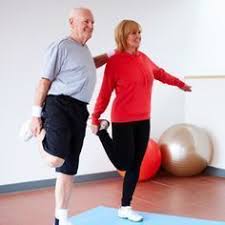
The goal of attaining a “solid six pack,” “toned abdominals,” or “strong core” is incessantly peddled through the mass marketing engine of society’s fitness ideals. Billboards, TV commercials, online promotional products, and novelty gyms have all standardized the image of the perfect midsection, located just below the chest and at (or slightly above) the waistline of a glamorized human body. Even worse, the pseudo-medical term “core” is applied so casually to most every mainstream strengthening program that most people who believe they’re “working it” don’t even know what, in fact, they are actually working. Patients frequently ask me, “Where, or what, exactly is my core?”

The simple answer found on the bottom of a workout poster in the gym would read, “the muscles comprising the abdominal and lumbar regions, including the rectus and transverse abdominus, obliques, quadratus lumborum, paraspinals, etc, etc...” First of all, the phrase “strengthening the stomach” is, anatomically, a total misnomer. Our actual stomach is located just below the heart at the lowest border of the ribcage - thus the term “heartburn” for acid reflux is appropriately derived. What people actually mean by strengthening their “stomach” would more correctly apply to the region holding together the “sack” of roughly 25 feet of intertwined intestines and bowels, resting above the pelvic basin.
Relaxing the definition of “core” as beyond a distinct anatomical boundary, it is much easier to begin to understand a “center of structure,” or “framework of strength” when looking outside the typical exercise-type scenario. Take for example the explosive, tightly coiled posture of a rattlesnake ready to strike death in the fraction of a second…

Who could doubt the existence of the snake’s strength? Impossible! But where is the existence of its core? Certainly it is in there somewhere. Perhaps it’s in the abdomen (wherever that is), or maybe it’s in the alignment of its extra-elongated spine. Could the “true” core be in the abstract projection the animal’s body assumes and not in the physical bones at all?

Is shape alone evidence of structure? I won’t even tease upward levels of “core” abstraction with something like a jellyfish’s swirl! At least sticking with one species that we are most familiar with makes things a bit simpler. Take the woman pictured below in the ever famous, and always celebrated core-exercise pose… “the plank.”

A quick, yet obvious, examination of her poise will reveal she possesses at least adequate, if not excellent, core strength. The alignment of her shoulder joint is solid to the trunk of her body; the angles formed by her elbow and knees in relation to the ground are sharp and not sagging; even her eyes and face radiate a level of determination and “inner strength” that extend “deeper” than her six-pack sack of abdominal muscle two feet below. The “core” here is witnessed being far more than stomach anatomy, more than muscle itself -- it is a frame of mind!
So what, where, how (or even when?) is the mysterious “core” actually defined?
Ironically, the purest, Latin definition of core as “that of the heart” lies closest to the truth. In Chinese medicine, the heart has two natures, physical and energetic. Aside from commanding the 5-6 liters of blood through every vessel of the body, it also shares an energetic relationship with the psyche, or the emotions of the soul. It is actually the center point or “core” of our character, the focus of our internal vision.
In the end, it is the “goal,” the “prize,” the “process” that we set ourselves upon, whether training in the gym or in life, that ultimately becomes our heart’s purest reveal… our truest core.










You must be logged in to post a comment.